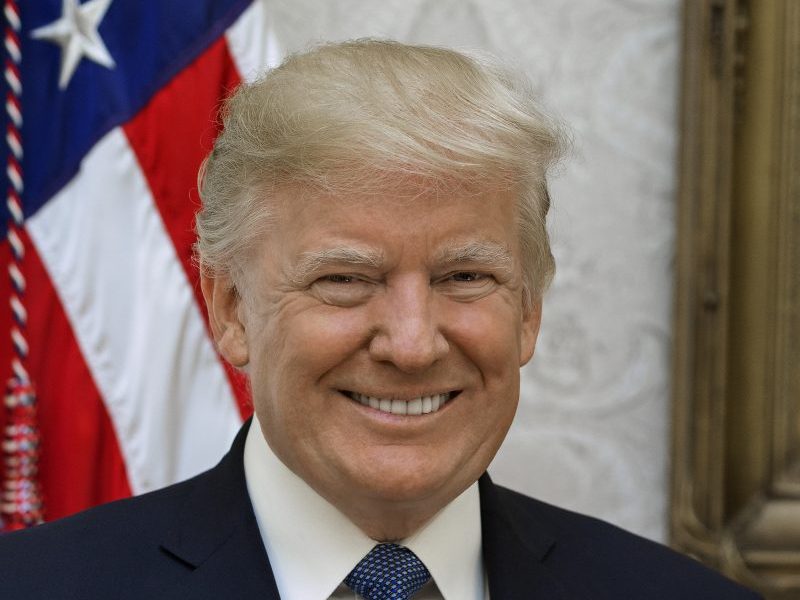Trump calls for national spectrum strategy in presidential memorandum
President Donald Trump yesterday issued a memorandum calling for the development of a national spectrum strategy in nine months that is designed to better position the United States for the deployment of wireless communications, particularly 5G.
“While American industry continues to extract greater and greater value from spectrum, each technological leap also increases demands on its usage,” according to the memorandum. “Those demands have never been greater than today, with the advent of autonomous vehicles and precision agriculture, the expansion of commercial space operations, and the burgeoning Internet of Things signaling a nearly insatiable demand for spectrum access.
“Moreover, it is imperative that America be first in fifth-generation (5G) wireless technologies—wireless technologies capable of meeting the high-capacity, low-latency, and high-speed requirements that can unleash innovation broadly across diverse sectors of the economy and the public sector. Flexible, predictable spectrum access by the United States government will help ensure that federal users can meet current and future mission requirements for a broad range of both communications- and non-communications-based systems.”
With this in mind, the memorandum directs federal agencies to “thoughtfully consider whether and how their spectrum-dependent mission needs might be met more efficiently and effectively.” Within 180 days, agencies are supposed to provide information about their projected spectrum needs to U.S. Secretary of Commerce Wilbur Ross, through the National Telecommunications and Information Administration (NTIA).
Also within 180 days, the director of the Office of Science and Technology Policy (OSTP) will submit reports on the spectrum demands of emerging commercial technologies and research-and-development priorities that are designed to increase spectrum access and efficiency, according to the memorandum.
In addition, Ross—working through the NTIA and in consultation with the Office of Management and Budget (OMB), OSTP and the FCC—is required to submit a report on spectrum-repurposing initiatives within 180 days. Within 270 days, Ross and this same support group is supposed to submit a long-term National Spectrum Strategy that includes legislative, regulatory and other policy recommendations.
The memorandum also establishes a Spectrum Strategy Task Force that will be co-chaired by the National Economic Council’s director and CTO. Representatives from OMB, OSTP, the National Security Council, the National Space Council and Council of Economic Advisors also will be on the task force, which will work with NTIA and consult with the FCC, according to the memorandum.
In a blog post, NTIA Administrator David Redl expressed support for the presidential memorandum and a National Spectrum Strategy.
“This strategy will help ensure America’s national and economic security and fortify our continued leadership in wireless communications technologies,” according to Redl’s blog post. “The Presidential Memorandum addresses immediate needs and sets goals that will carry us well into the future, so our nation can build a long-term, sustainable spectrum access framework.
“The [NTIA] will work with members of a new Spectrum Strategy Task Force in a multiyear effort to develop and implement this national strategy. The strategy will be informed by examinations of spectrum use and will help policymakers meet our needs both now and in the future. It will also help align research, development, testing and evaluation efforts.”
The FCC also expressed support for the measure.
“We support the President’s spectrum memorandum and applaud his strong commitment to American leadership in 5G,” according to an FCC statement provide to IWCE’s Urgent Communications. “The FCC will continue to work aggressively to push more spectrum into the commercial marketplace, including through our 28 GHz spectrum auction which will commence in November.”
Two key trade organizations that represent commercial wireless carriers expressed support for the presidential memorandum.
“We commend the administration for recognizing the importance of establishing a national spectrum strategy,” CTIA President and CEO Meredith Atwell Baker said in a prepared statement. “With the right approach based on licensed wireless spectrum, America’s wireless carriers will invest hundreds of billions of dollars and create millions of jobs to deploy next-generation networks and win the global 5G race.”
Competitive Carriers Association (CCA) President and CEO Steven Berry echoed this sentiment.
“Spectrum policy plays an important role in the U.S. economy, and I am pleased the Administration will create a National Spectrum Strategy,” Berry said in a prepared statement. “CCA agrees that effective and efficient use of spectrum is essential to help meet the ever-growing consumer demand for data, secure the United States as a global technology leader, and help achieve the important goal of bridging the digital divide between rural and urban areas.”
“Making additional spectrum available for advanced wireless services will greatly benefit consumers and businesses across the country, particularly in rural America. CCA is pleased the Administration is focused on this important issue, and we look forward to continued engagement with policymakers to ensure spectrum is available for deployment of next-generation wireless technologies.”

















